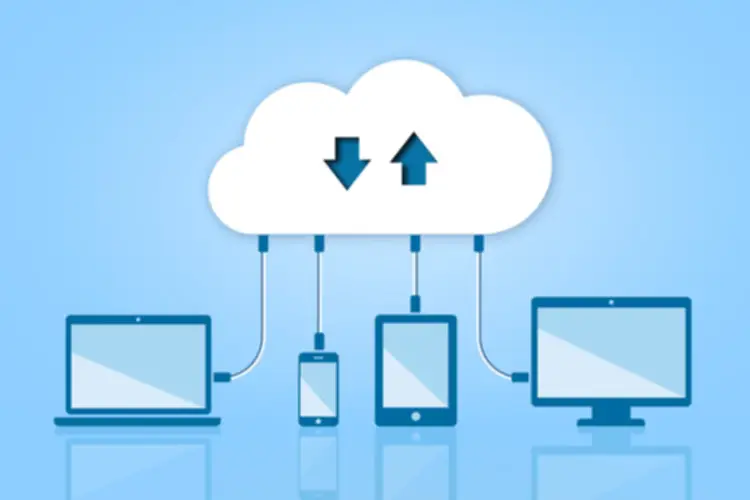Cloud migration permits increased agility, better data accessibility, enhanced safety, and important price optimization, positioning companies for future development and competitiveness. Cloud options are pivotal for improving customer personalization and supply chain efficiency. Retailers can leverage cloud-based analytics to know customer habits, energy suggestion engines, and handle inventory across a quantity of channels in real-time. Implementing a data migration technique is essential so your information transfer happens easily and effectively. Having a method helps you allocate the right assets and tools while minimising dangers, prices, downtime and possible compliance issues.
Greatest Practices For A Successful Cloud Migration
By migrating to the cloud, businesses can scale back costs, improve performance, and achieve entry to advanced technologies similar to AI, machine studying, and large knowledge analytics. With various methods obtainable, such as rehosting, replatforming, or refactoring, organizations can select the approach that best fits their wants. While challenges like cost management, knowledge security, and vendor lock-in exist, instruments like NetApp Cloud Volumes ONTAP help streamline the migration course of and optimize costs, making certain a easy transition.
Organizations should carefully plan and test migrations to keep away from information loss, downtime, or performance points. Successful cloud migration requires a complete technique that lays out migration objectives and anticipates challenges. For occasion, legacy functions in an organization’s community may not be optimized for the cloud, so that they should be prepared for the method with migration instruments and approaches designed for the duty. The migration course of could contain rehosting, replatforming, or refactoring purposes to make sure they’re optimized for the cloud setting. Once the cloud migration course of is completed, you must observe and optimize the performance to see whether your applications are working efficiently and are secure. The ongoing optimization and management enable cloud infrastructure to efficiently meet the business’s objective.
Companies must carefully manage resources and select the best cloud providers to keep away from exceeding price range limits. NetApp additionally supports Google Cloud migrations, offering high performance, information protection, and scalability to businesses migrating massive datasets. Successful cloud migration isn’t about adopting the most recent technologies however how efficiently the model new techniques are utilized for higher performance.
- Frequent coordination meetings, shared documentation platforms, and transparent progress monitoring mechanisms help align stakeholders and maintain the migration centered and responsive to emerging challenges.
- To fully leverage cloud capabilities, organizations should evolve toward cloud-native maturity.
- With a flexible strategy and a dedication to understanding the varied choices, enterprises can make informed choices that maximize the worth of their cloud investments and position them for future development.
- Non-public clouds can be integrated with public clouds, making a hybrid cloud that supports migration between the 2 as desired.
- To guarantee a successful transition, organizations ought to observe a well-defined workflow that focuses on complete planning, execution and optimization.
Cloud environments can really feel Warehouse Automation overwhelming initially due to their breadth and variety of companies. IT leaders and developers should familiarize themselves with cloud principles, safety practices, compliance necessities, and cost administration methods. A replatforming (also often known as lift-and-reshape) cloud technique makes an attempt to use some cloud-native options whereas maintaining compatibility by making specific, but minimal, changes to the existing IT structure.
Information Breach Insurance Coverage Demystified: Why Your Small Business Can’t Threat Going With Out It

They should repeatedly reassess their cloud migration strategies and optimize their cloud environments to stay ahead of the curve. Retiring involves decommissioning or phasing out legacy functions, techniques, or infrastructure that are now not needed or appropriate for migration to the cloud. Organizations may retire outdated or redundant functions to streamline operations, reduce maintenance costs, and simplify migration.
It partners with a number of cloud providers like Oracle Cloud, AWS, Google Cloud, Azure, and extra to offer seamless transformation to a cloud setting that most precisely fits your business goals and requirements. The pay-per-subscription allows companies to only pay for services they’ve availed, slicing down on further costs. Estimating and controlling expenses throughout a cloud migration and beyond is hard work. Though cloud services can provide long-term price financial savings, the initial migration part often incurs significant bills associated to data switch, re-architecture and coaching. Moreover, with out correct monitoring and optimization, ongoing cloud usage prices can escalate rapidly, resulting in finances overruns and financial pressure.
What Forms Of Knowledge Migration Are There?

But every thing else, from costs to cloud structure selections, hinges on which approach you choose. Efficient measurement is crucial for evaluating the outcomes of a cloud migration and guiding future enhancements. Key efficiency indicators (KPIs) should be established on the cloud data migration outset and reviewed throughout the method. Cloud adoption introduces new governance, risk management, and compliance necessities. Organizations should adapt their frameworks to handle dynamic infrastructure, decentralized services, and continuous deployment pipelines.
Repurchasing entails changing legacy applications with cloud-based Software-as-a-Service (SaaS) solutions. This strategy is commonly used when the present on-premise application https://www.globalcloudteam.com/ is outdated, and a cloud-native answer offers higher functionality, safety, and scalability. Once the assessment is full, will most likely be simple to understand the current scenario of the business infrastructure.
After data migration, legacy systems should be carefully decommissioned or repurposed to prevent shadow IT dangers and control costs. Earlier Than any manufacturing system is moved to the cloud, operational readiness should be validated. This consists of confirming the provision, performance, and security of cloud sources, in addition to guaranteeing that each one supporting techniques and personnel are ready to assist the workload post-migration. Before initiating any migration activity, a well-defined timeline must be created, together with milestones for software testing, data transfer, system integration, and validation. Every application ought to have a documented runbook specifying steps for migration, rollback, and recovery within the event of failure. Clear ownership and accountability are essential to maintain the migration on schedule and aligned with business targets.
Traditionally, organizations ran their purposes and IT companies on self-managed IT infrastructure that was maintained in an on-premises information middle. Some organizations could have thousands of databases, purposes, and system software program working on-site. When you migrate to the cloud, you shift these workloads from on-premises knowledge centers to the cloud provider’s infrastructure in a deliberate, nondisruptive way. With a cloud migration technique, you prioritize workloads, plan, and test so you possibly can systematically move your operations to the cloud. Cloud migration is an essential course of for businesses trying to enhance their IT infrastructure, scale their operations, and increase flexibility.
